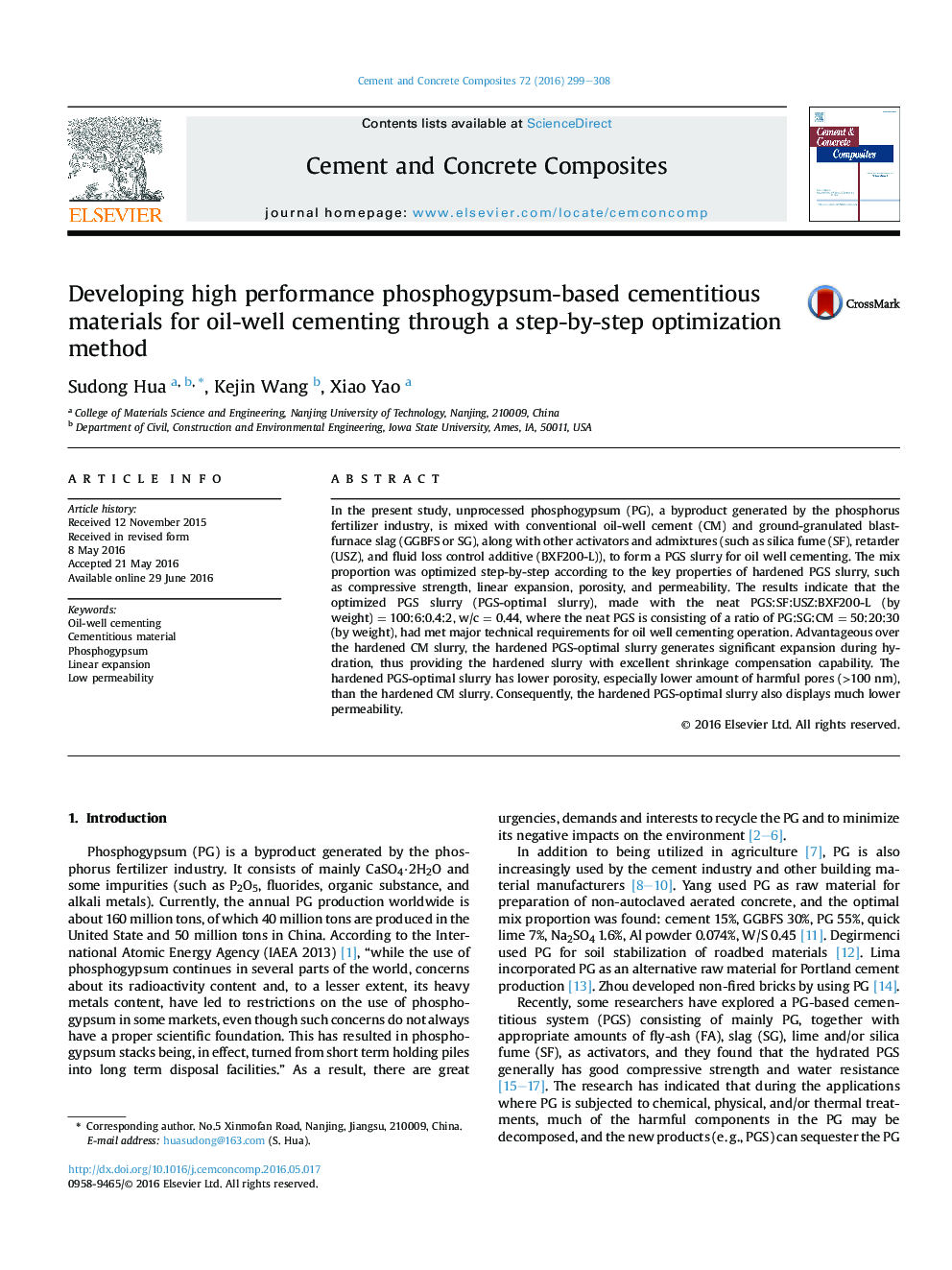| Article ID | Journal | Published Year | Pages | File Type |
|---|---|---|---|---|
| 1454300 | Cement and Concrete Composites | 2016 | 10 Pages |
•There are great urgencies, demands and interests to recycle the PG and minimize its negative impacts on the environment.•A well-designed PG-slag composite can met the major technical requirements for oil well cementing operation.•This mix design method was effective for proportioning PGS slurry and optimizing the amount of admixtures and additives.•Hardened PGS-slurry has a much lower pore volume and permeability than the hardened oil well cement slurry.
In the present study, unprocessed phosphogypsum (PG), a byproduct generated by the phosphorus fertilizer industry, is mixed with conventional oil-well cement (CM) and ground-granulated blast-furnace slag (GGBFS or SG), along with other activators and admixtures (such as silica fume (SF), retarder (USZ), and fluid loss control additive (BXF200-L)), to form a PGS slurry for oil well cementing. The mix proportion was optimized step-by-step according to the key properties of hardened PGS slurry, such as compressive strength, linear expansion, porosity, and permeability. The results indicate that the optimized PGS slurry (PGS-optimal slurry), made with the neat PGS:SF:USZ:BXF200-L (by weight) = 100:6:0.4:2, w/c = 0.44, where the neat PGS is consisting of a ratio of PG:SG:CM = 50:20:30 (by weight), had met major technical requirements for oil well cementing operation. Advantageous over the hardened CM slurry, the hardened PGS-optimal slurry generates significant expansion during hydration, thus providing the hardened slurry with excellent shrinkage compensation capability. The hardened PGS-optimal slurry has lower porosity, especially lower amount of harmful pores (>100 nm), than the hardened CM slurry. Consequently, the hardened PGS-optimal slurry also displays much lower permeability.
